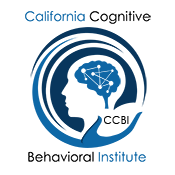Pediatric bipolar disorder has increased over the last several decades. Clinicians acting with good intent to help children and adolescents have incorrectly diagnosed these clients with bipolar disorder.
A new diagnosis, DMDD (Disruptive Mood Dysregulation Disorder) was added to the fifth edition of the DSM-5 (Diagnostic and Statistical Manual of Mental Disorders, to address concerns by parents and mental health professionals about the over diagnosis and treatment of bipolar disorder in children. The diagnosis of persistent irritability and frequent episodes of extreme behavioral dyscontrol.
DMDD symptoms are characterized:
*Severe and recurrent temper outbursts resulting from insignificant provocation or situation
*Verbal/Behavioral manifestations such as in the form of verbal rages, or physical aggression toward people or property
*Mood/Behavior that is grossly out of proportion in intensity or duration to the situation or provocation and inconsistent with the child’s development level
*Temper outbursts in at least two settings at home, at school. or with peers, with one of these settings being “severe”
*Otherwise by others (parents, peers, teachers) in children 6 years of age or older, with onset before age 10
The hallmark DMDD symptom is very severe, nonepisodic irratability that is persistent, frequent and extreme, and is differentiated from a pattern of irritability when frustrated. Assessment of irritable mood and temper outburst, frequency and chronicity are essential with this disorder.
Keep in mind that DMDD is mutually exclusive with bipolar disorder, intermittent explosive disorder, posttraumatic stress disorder, and oppositional defiant disorder. Yet, DMDD can coexist with attentional-deficit/hyperactivity disorder, conduct disorder, substance use disorders and major depressive disorder if clear cut changes between these disorders and DMDD are reported and observable. DMDD is listed in the DSM-5 depressive disorder chapter instead of the disruptive, impulse control and conduct disorders chapter.
In conclusion, here is another “disorder” that we get to label children with when possibly they don’t need to be labeled. I will let you make up your own mind on this. (Counseling Today was used for some of this information).

